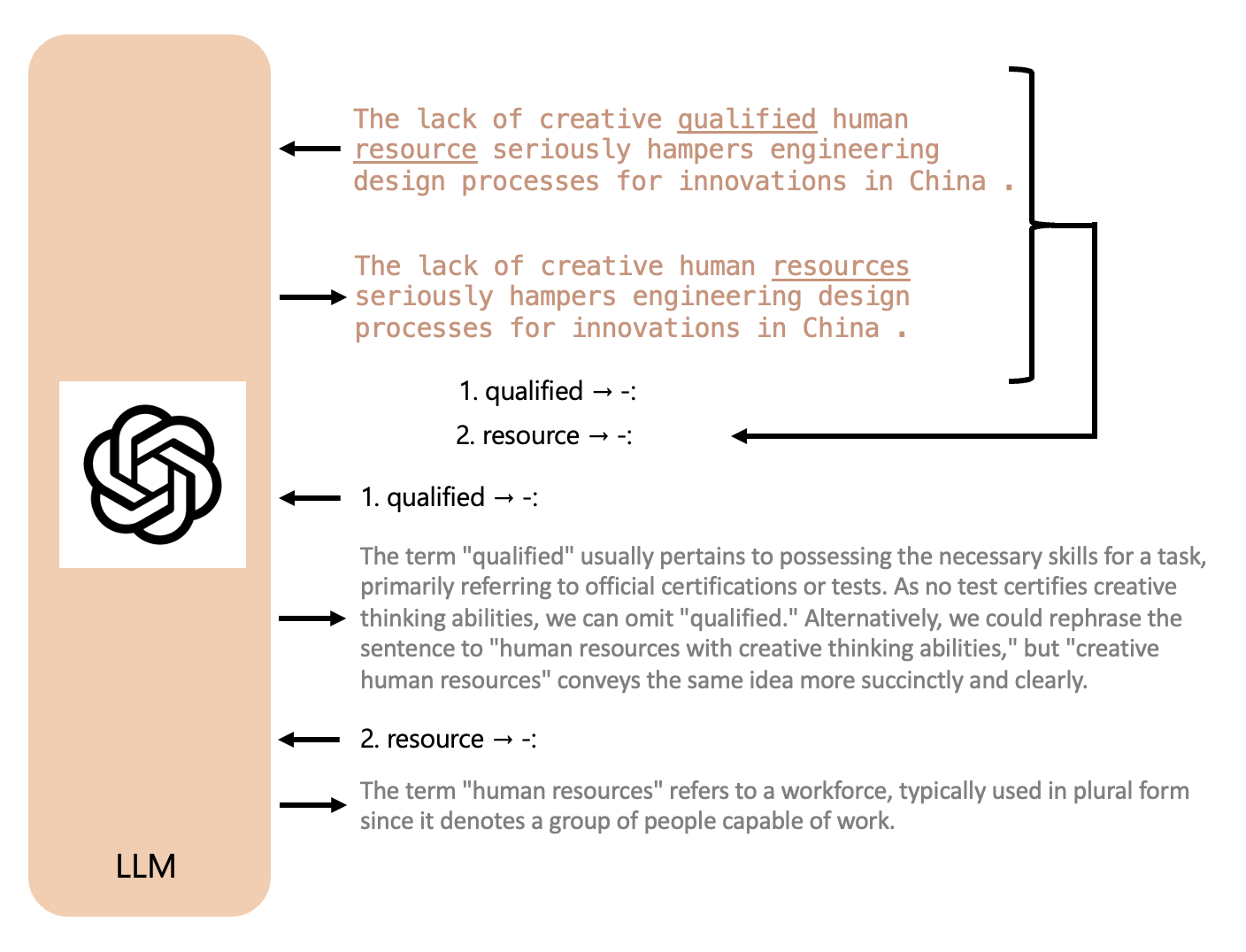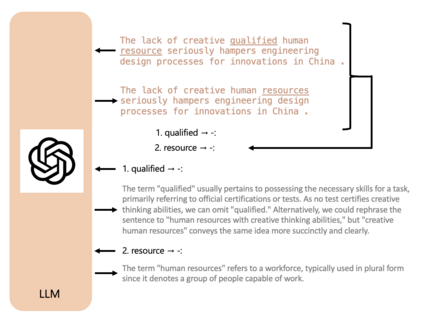In Grammatical Error Correction (GEC), it is crucial to ensure the user's comprehension of a reason for correction. Existing studies present tokens, examples, and hints as to the basis for correction but do not directly explain the reasons for corrections. Although methods that use Large Language Models (LLMs) to provide direct explanations in natural language have been proposed for various tasks, no such method exists for GEC. Generating explanations for GEC corrections involves aligning input and output tokens, identifying correction points, and presenting corresponding explanations consistently. However, it is not straightforward to specify a complex format to generate explanations, because explicit control of generation is difficult with prompts. This study introduces a method called controlled generation with Prompt Insertion (PI) so that LLMs can explain the reasons for corrections in natural language. In PI, LLMs first correct the input text, and then we automatically extract the correction points based on the rules. The extracted correction points are sequentially inserted into the LLM's explanation output as prompts, guiding the LLMs to generate explanations for the correction points. We also create an Explainable GEC (XGEC) dataset of correction reasons by annotating NUCLE, CoNLL2013, and CoNLL2014. Although generations from GPT-3 and ChatGPT using original prompts miss some correction points, the generation control using PI can explicitly guide to describe explanations for all correction points, contributing to improved performance in generating correction reasons.
翻译:暂无翻译




